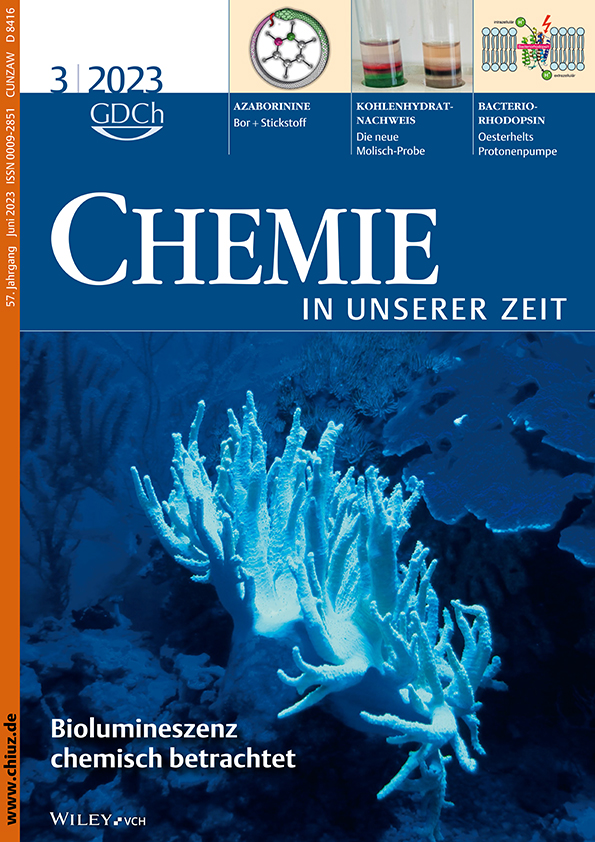Azaborinine
Hybride aus Benzol und Borazin
Zusammenfassung
deDer formale Austausch zweier benachbarter Kohlenstoffatome im klassischen Aromaten Benzol durch jeweils ein Bor- und ein Stickstoffatom liefert ein 1,2-Azaborinin. Dieses weist im Vergleich zum aus alternierenden Bor- und Stickstoffatomen bestehenden Sechsring Borazin eine deutlich gesteigerte Aromatizität auf, was experimentell etwa durch eine Untersuchung der Bindungslängen, Resonanzstabilisierungsenergien, NMR-Verschiebungen oder Reaktivitäten gegenüber Elektrophilen nachgewiesen werden konnte. Im Labor lassen sich monozyklische Azaborinine vor allem über Olefinmetathesen offenkettiger B,N-Allylderivate und anschließende Aromatisierung herstellen, doch auch der Einbau in größere Systeme ist möglich. Sowohl monozyklische als auch polyzyklische Azaborinine weisen ein großes Anwendungspotential etwa in den Materialwissenschaften, der Pharmakologie oder der Analytik auf, da die polare B-N-Einheit eine Reihe neuartiger chemischer, physikalischer und optischer Eigenschaften induziert.
Summary
enThe formal replacement of two neighbouring carbon atoms in the classical aromatic molecule benzene by a boron- and a nitrogen atom provides a 1,2-azaborinine. Compared to borazine, a six-membered ring consisting of alternating boron and nitrogen atoms, azaborinines exhibit an increased degree of aromaticity. This could be verified experimentally for instance by analyzing the bond lengths, resonance stabilization energies, NMR shifts or the reactivities against electrophiles. In the laboratory, monocyclic azaborinines may be synthesized by the olefin metatheses of open-chained, allylic BN-precursors and subsequent aromatization, but the implementation into larger systems is possible, as well. Both monocyclic and polycyclic azaborinines exhibit a great application potential in materials science, pharmacology or analytics because the polar B-N-unit introduces a number of novel chemical, physical and optical properties.




